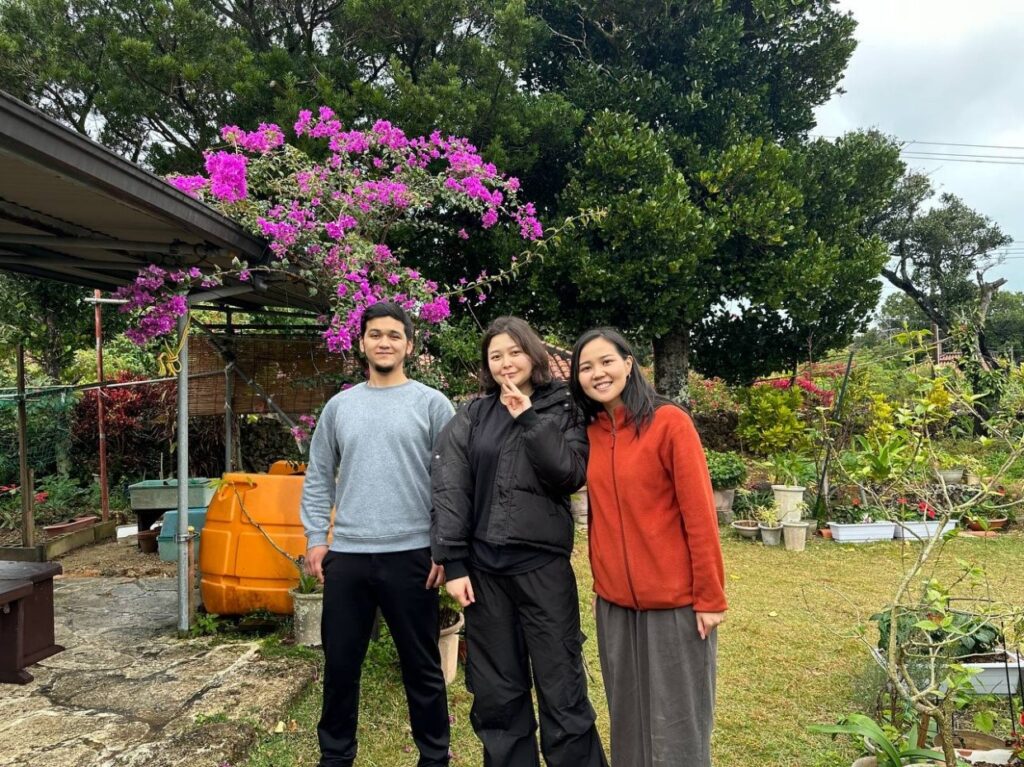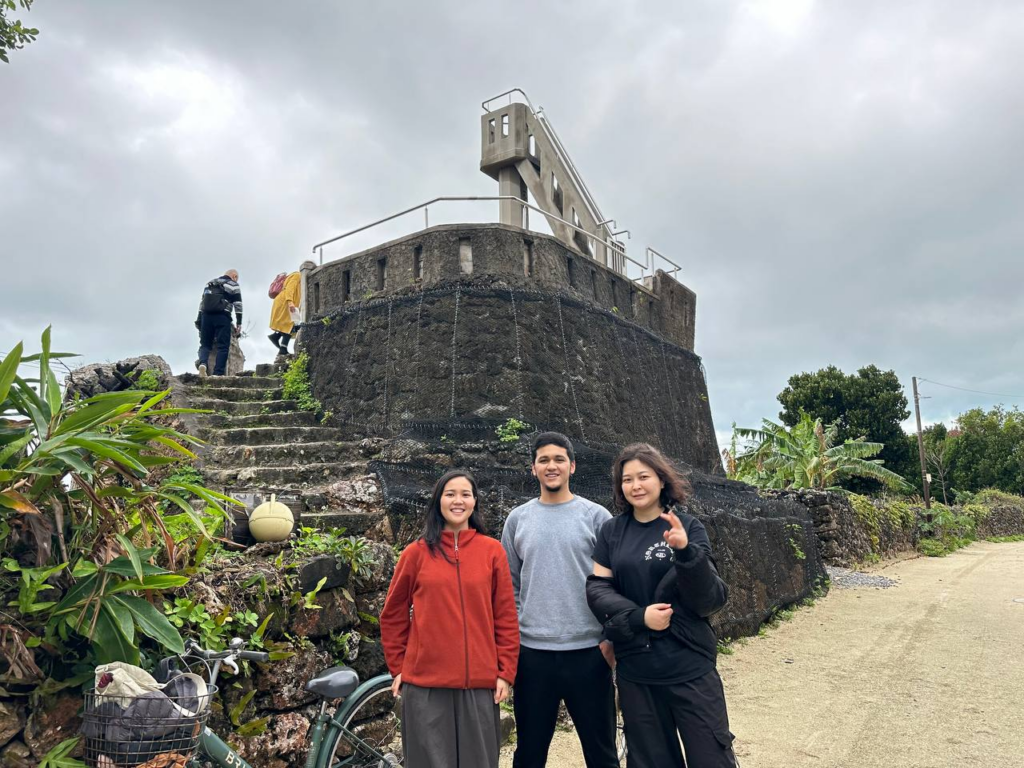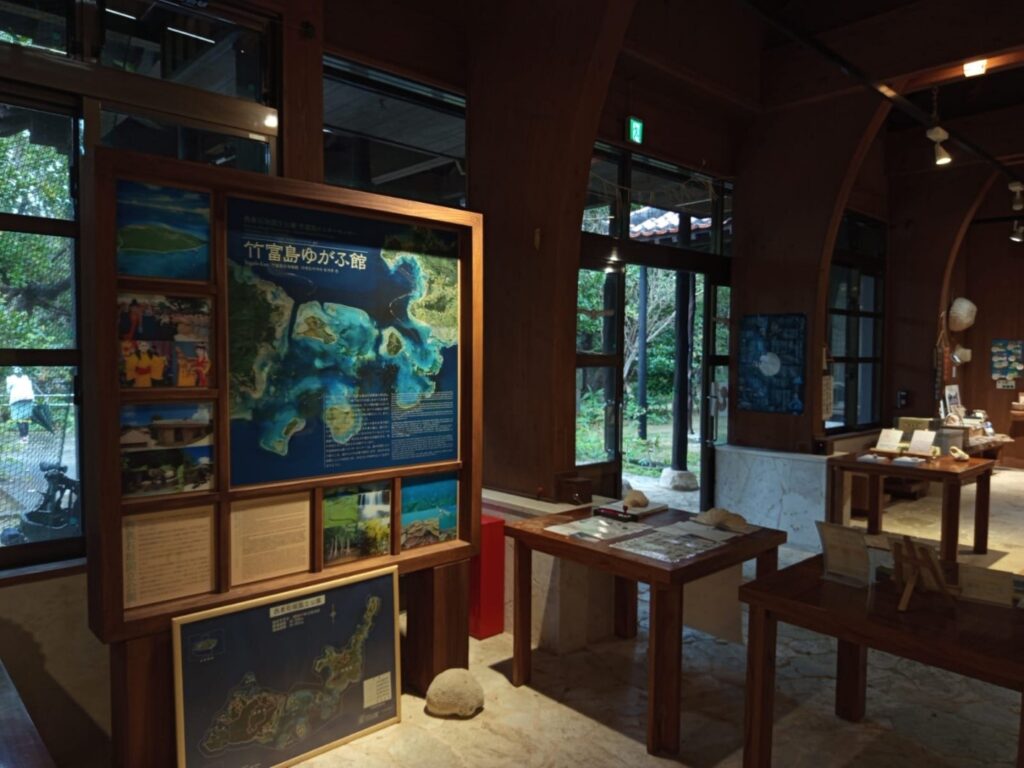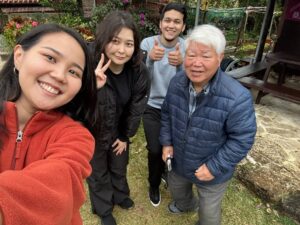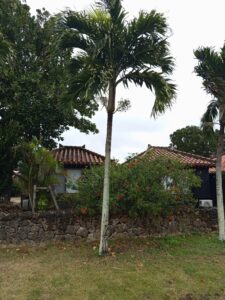Umirzakova Nazym
As we arrived on Taketomi Island, we felt as if we had stepped into another world, one that had preserved its traditions and natural beauty for generations. The island holds a rich cultural heritage that has been carefully protected. Unlike modern cities, Taketomi’s streets are covered in white sand, and the houses are built in a traditional style with red-tiled roofs, stone walls, and wooden fences. Everything seemed to belong to another time, untouched by the fast changes of the modern world.
One of the first things we noticed was how nature and human life blended so naturally. Along the narrow roads, bright hibiscus flowers bloomed, adding splashes of red and yellow to the green surroundings. Tall palm trees swayed in the warm, tropical breeze, making us feel the relaxed rhythm of island life. The climate was hot and humid, but the occasional cool wind from the ocean made it pleasant to explore.
The local people were very welcoming and kind. One man, in particular, was especially excited to meet us. He invited us into his small garden, where he proudly showed us his hibiscus flowers, explaining how they were used for tea and decoration. He seemed happy to have visitors from Central Asia, a place so far from his own island. He asked us many questions about our countries and cultures, and in return, he shared stories about life on Taketomi. His enthusiasm and kindness made our visit feel even more special.
As we continued our journey, we realized how much effort the islanders put into keeping their traditions alive. Every house followed strict rules to maintain its original style, ensuring that Taketomi would always look as it did in the past. The islanders also live in close connection with nature. They use natural materials in their homes, follow old fishing methods, and grow their own food. It was interesting to see how they have managed to keep their way of life despite the influence of modernization.
One of the highlights of our visit was the breathtaking natural scenery. We went to the Kondoi Beach and Kaiji Beach, where the sand was soft and white, and the water was so clear that we could see the fish swimming near the shore. The beauty of the ocean was unforgettable. At the West Pier, we learned that it is one of the best spots to watch the sunset, as the sky turns into shades of orange and pink over the calm sea.
Taketomi is not only a place of history and beauty but also an example of sustainable living. The islanders are careful about protecting the environment. We were reminded not to leave any trash behind, as the community follows strict eco-friendly rules. They also use traditional farming and fishing techniques that do not harm nature.
As we left Taketomi, we reflected on everything we had seen and learned. The island is a rare example of a place where culture and nature exist in harmony. The people have managed to keep their traditions alive while also taking care of their environment. Their connection to the land and their warm hospitality made a deep impression on us. This visit was not just a trip—it was an opportunity to experience a way of life that values history, community, and sustainability. It also made us think about our own countries in Central Asia and how important it is to preserve our traditions and natural landscapes for future generations.

